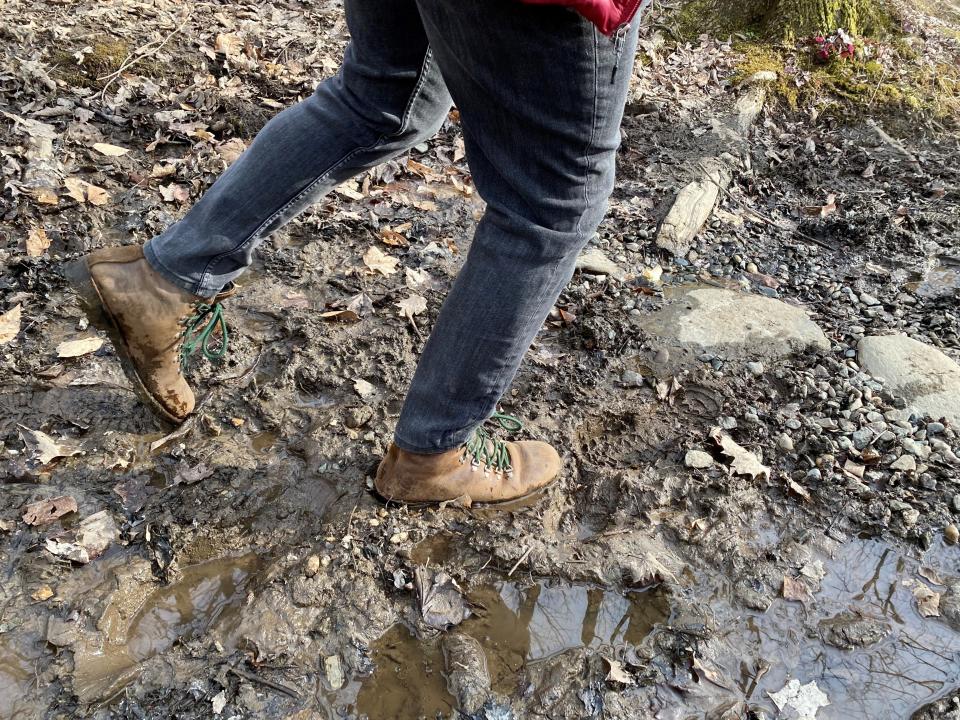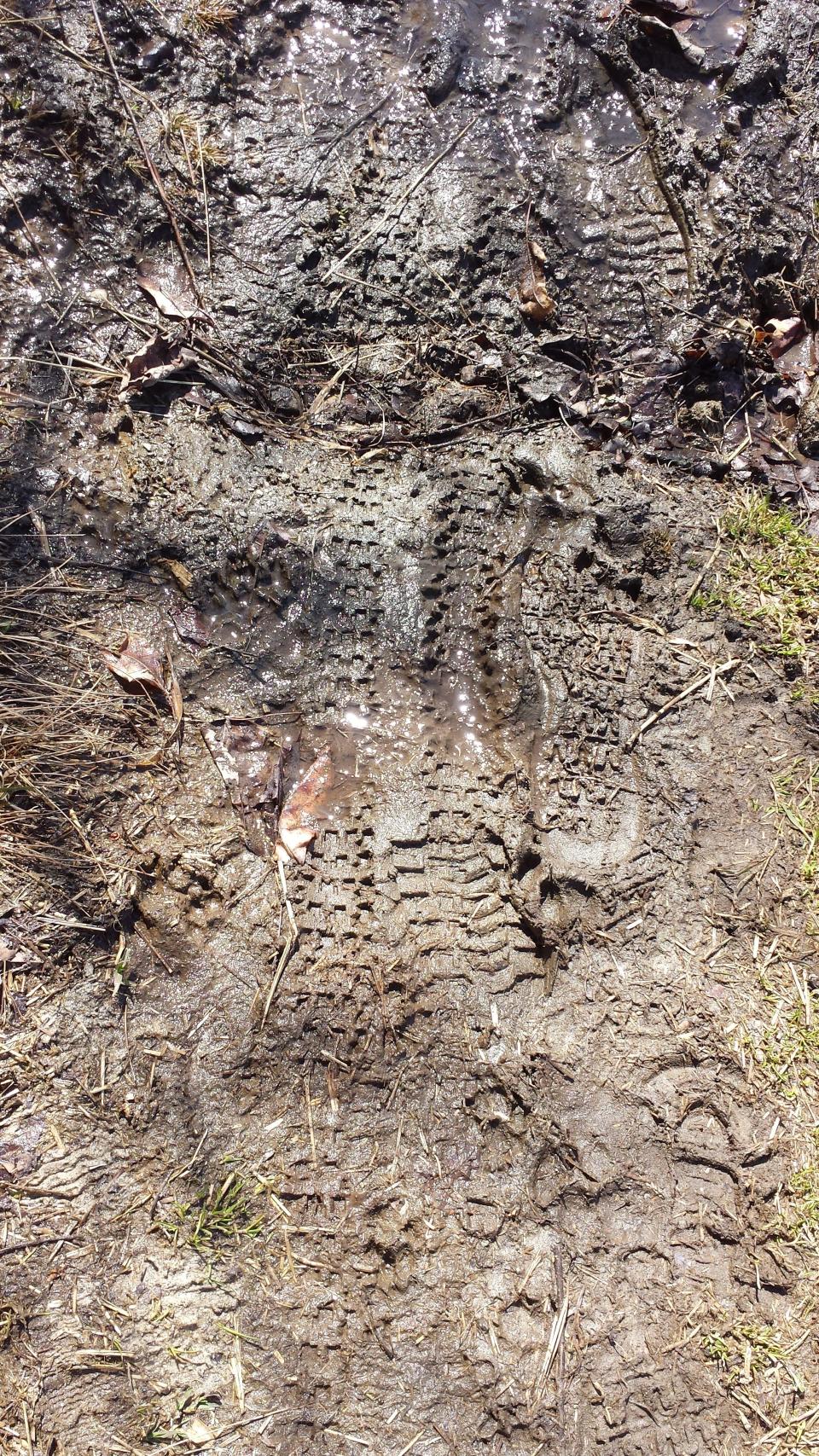It's mud season in the Green Mountains. Here's what hikers need to know.
It's mud season in Vermont, and that means hikers need to exercise extra caution to avoid damaging Vermont's trails from now through the end of May, especially in the high country.
"The spots that are the most sensitive are the high peaks along the Long Trail − Camel's Hump, Stratton, Bromley − anyplace you get to the spruce-fir forest, out of the deciduous forest to sub-alpine and even alpine country on the 4,000-footers," said Keegan Tierney, the Green Mountain Club's director of field programs. "The soil is thin and the vegetation is fragile."
Tierney said hikers should hike through the mud if they encounter it, rather than trying to walk around it, which widens the trail and increases the threat of erosion. Better yet, he added, turn around if you encounter mud and head for drier trails. In some cases, what is supposed to be a two-foot-wide trail gets widened to as much as 40 feet by finicky hikers who want to avoid the mud by walking around it, according to Tierney.
"A lot of our project work is restoring trails in those areas where the trail has widened out significantly," he said.

Climate change makes it even muddier
Many hiking trails are closed during mud season, through May 26, and the Green Mountain Club encourages hikers to stay off of all high-elevation trails. The club also advises that with climate change bringing more intense rain storms and frequent freeze/thaw cycles throughout the winter, "mud season" has become more of a year-round mindset. The club encourages hikers to follow these guidelines:
During mud season (late March to Memorial Day) seek out durable surfaces and lower elevations. Respect trail closures, which are posted by Vermont Forests −Parks and Recreation, and road closures, as these may impact access to trailheads. Check out Green Mountain Club's mud season hikes and Vermont Forests' mud season hikes.
If you encounter mud on a hike, consider turning around. If you must continue, do so by hiking directly through the mud − not around its edges − to minimize your impact to the surrounding landscape.
Vermont's high elevations (above 2,500 feet) are most susceptible to damage, because of limited soil depth and rare, endangered arctic alpine plant communities.
Be prepared for a variety of conditions: warm, wet and muddy at trailheads and snow- or ice-covered at higher elevations. March's high snowfall totals means the mountains will be melting out well into spring. Check trail reports ahead of time and dress and pack for a variety of possible weather conditions.
On that last point, Tierney said hikers should avoid being fooled by the weather.
More: Why mud season is such a notorious, messy time in Vermont
"In the Champlain Valley it can be 60 degrees and on top of Mt. Mansfield it could be 30 degrees, windy and a ton of snow," he said. "Don't leave the valley in shorts and T-shirts and expect to be comfortable on top of the mountain."
An escape from social media
Tierney is responsible for some 500 miles of trails in Vermont, making up the Long Trail, the Appalachian Trail and various side trails. He works closely with Vermont's Department of Forests, Parks and Recreation and the Green Mountain National Forest, which between them own and manage most of the land involved in the trail network. The Green Mountain Club was formed in 1910, and has about 10,000 members today.
"The mission of the club when it was formed was the make the mountains of Vermont play a larger roles in the lives of people, getting folks out in the mountains to have some peace and respite from our modern times," Tierney said. "In the 1910s, when the club was formed, it was the dawn of the industrial era. Today, it's the internet, social media, etc."

Tierney works with a small year-round staff and a season staff of about 40, he said, to manage the trail system. He also relies on some 1,000 volunteers who do some trail maintenance on the "leading hikes."
"My job is to coordinate activity and serve as a bridge to land managers as well," Tierney said.
More: Looking for accessible trails in Vermont? Here are five you can't miss.
The Green Mountain Club is heading into the second year of restoration on the Burrows Trail, which ascends Camel's Hump and sees anywhere between 40,000 and 60,000 hikers each year, according to Tierney. Crews have been building up brush piles along the trail, which serves the dual purpose of keeping hikers on the main trail and serving as seed beds for restoring native vegetation and soils.
"Folks going up Burrows will definitely see our crews this summer," Tierney said. "We'll have four different trail crews over 20 weeks."
Contact Dan D’Ambrosio at 660-1841 or ddambrosio@freepressmedia.com. Follow him on Twitter @DanDambrosioVT. This coverage is only possible with support from our readers.
This article originally appeared on Burlington Free Press: Green Mountain Club asks hikers to exercise caution during mud season

